Crane flies look like big mosquitoes but don’t bite or spread diseases. They can be a nuisance in gardens or yards. This article shares simple home remedies to get rid of them without using harmful chemicals.
Dealing with crane flies doesn’t necessarily require harsh chemicals or expensive solutions. Many effective methods can be implemented using simple household items or natural substances. If you’re looking for natural and economical home remedies to rid flies, you’ve come to the right place. This blog post will look at some home cures for reducing crane fly numbers and minimizing their impact on your living environment.
Key Takeaways
- Crane flies are non-pest insects despite their mosquito-like appearance.
- They thrive in moist soil, so reducing damp areas can limit their presence.
- Common household items like dish soap and vinegar work as effective treatments.
- Prevention focuses on soil maintenance and eliminating standing water.
- Early action stops larvae from damaging lawns and multiplying.
Understanding Crane Flies: Facts and Identification
Crane flies are often mistaken for large mosquitoes. But, they have physical characteristics that show they are different. They have long, slender bodies and delicate wings. Their legs often splay outward, making them look unsteady.
Unlike mosquitoes, crane flies do not bite or spread diseases. This makes them harmless to humans.
- Body: Slender, typically ½ to 1½ inches long
- Wings: Translucent with visible veins, resting tip-to-tip over the body
- Legs: Six spindly legs, sometimes longer than the body
They live in moist places like lawns and near water. Adults are most active at dusk, attracted to lights. Larvae live in soil or decaying matter, eating plant roots or organic debris.
Crane flies are different from mosquitoes in several ways:
- No blood-feeding mouthparts
- Larger, non-piercing proboscis
- No swarming behavior
Knowing how to tell crane flies apart helps avoid unnecessary pest control. They are more of a curiosity than a threat. To identify them, look at their physical characteristics and where they live.
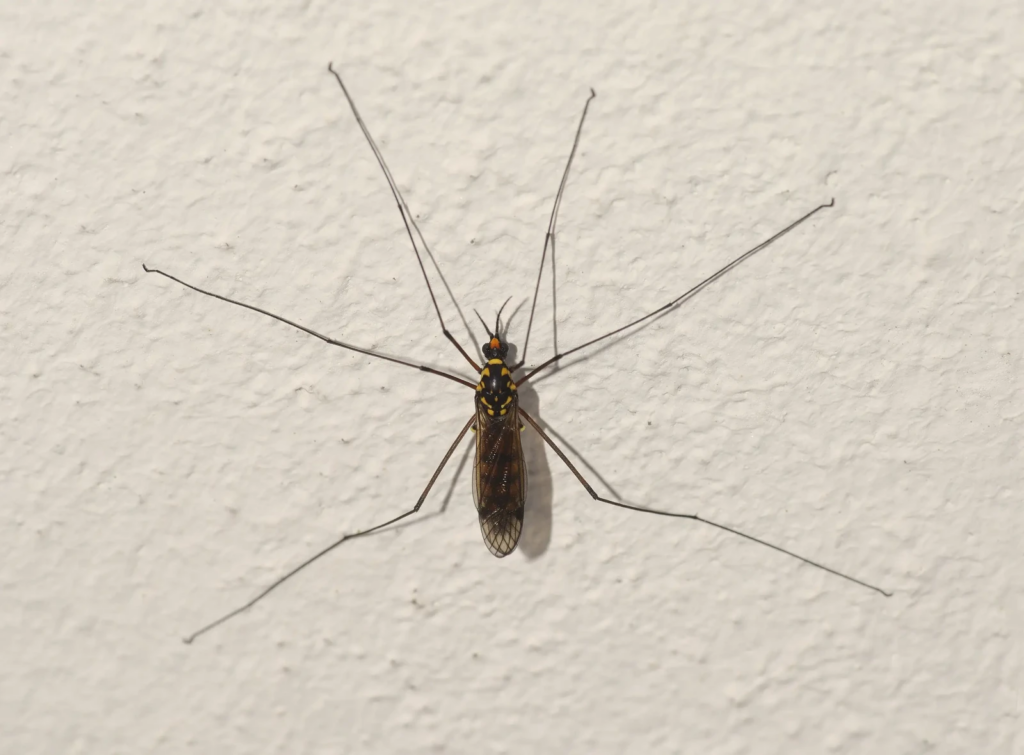
The Life Cycle of Crane Flies
The crane fly life cycle has four stages: eggs, larvae, pupae, and adults. Each stage affects lawns and surroundings. Knowing this helps homeowners fight infestations better.
- Eggs: Laid in moist soil in late summer, they hatch into larvae in weeks.
- Larvae (Leatherjackets): These grubs live in soil and eat grass roots. They cause brown patches in lawns. They’re most active in spring and fall.
- Pupae: Larvae turn into pupae underground. This stage lasts 2–3 weeks.
- Adults: Winged crane flies come out briefly in late summer. They mate and lay eggs, living only a few days.
The crane fly life cycle lasts about 12 months. But it can change with temperature and soil moisture. Wet soils help larvae grow faster, while dry soils slow them down.
Lawn damage is worst when larvae are feeding. It’s key to watch soil conditions. Adults don’t harm because they don’t bite or eat. By acting at the right time, like targeting larvae in spring, homeowners can protect lawns. It’s all about knowing when to act to stop damage.
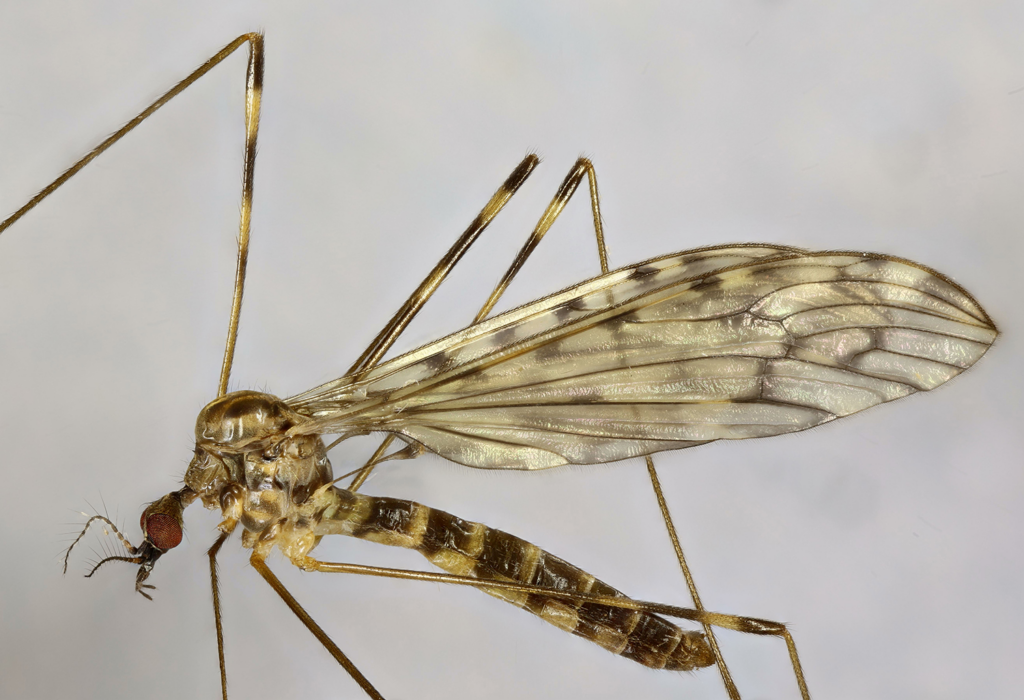
Common Home Remedies for Crane Fly Removal
Effective Herbal and Natural Repellents are a safe way to keep crane flies away. Essential oils like peppermint, lavender, and eucalyptus confuse them. This makes treated areas less appealing.
Mix a few drops of these oils with water in a spray bottle. Spray it on window sills, outdoor plants, and garden soil. This creates barriers against them.
- Peppermint oil sprays repel insects when applied to grassy areas where crane flies rest.
- Lavender oil blends with carrier oils like coconut oil can be dabbed on door frames to deter entry.
- Eucalyptus oil diluted in water works well as a foliage spray for lawns.
DIY traps make removing them easier. Fill shallow dishes with apple cider vinegar and a drop of dish soap near problem zones. Crane flies are attracted to the scent and get trapped.
For physical barriers, install mesh screens over vents and repair window gaps. Regularly trimming overgrown vegetation also helps. This reduces larval habitats and limits infestations.
These methods target both adult insects and their breeding sites without harsh chemicals. Using these strategies regularly can keep them under control over time.
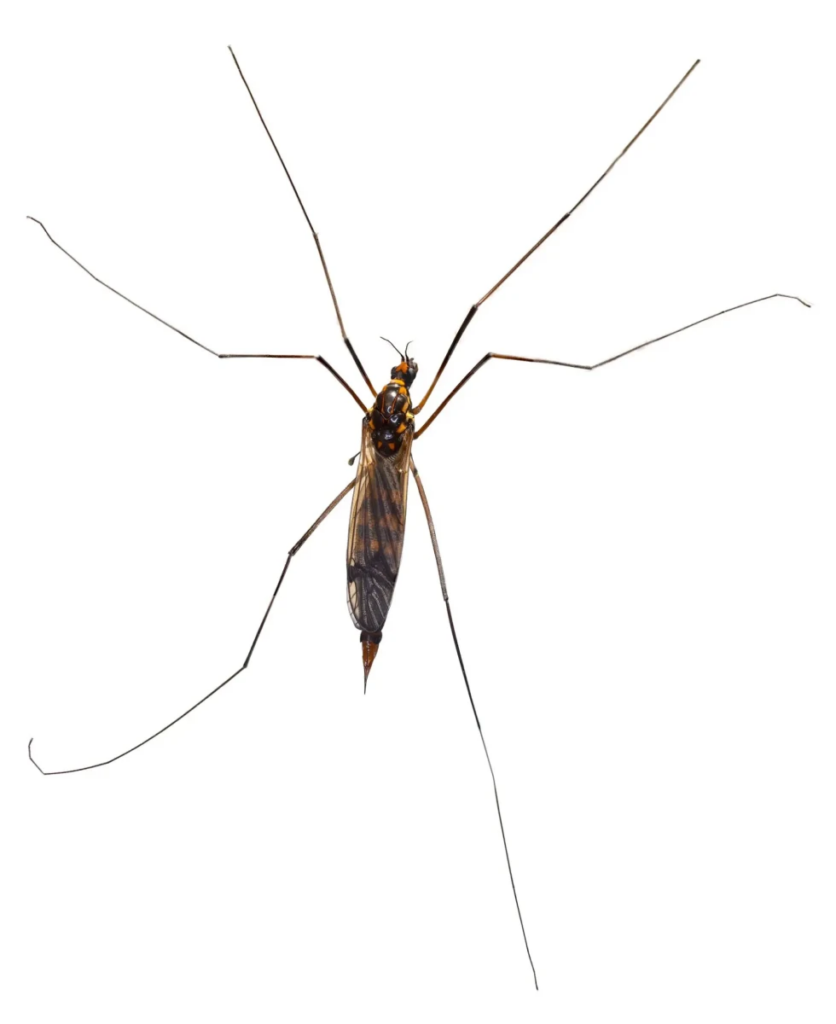
DIY Natural Solutions for Crane Fly Control
Effective crane fly control starts with simple changes to your outdoor spaces. Make adjustments to routines and habitats to reduce their presence without chemicals. Here are some steps to try:
- Adjust Watering Habits: Overwatering makes soil moist, where crane fly larvae thrive. Water lawns deeply but less often to dry out the topsoil layers.
- Improve Drainage: Fix soggy areas by aerating compacted soil or adding gravel. Proper drainage denies larvae their preferred breeding grounds.
- Maintain Lawn Height: Keep grass trimmed to 2–3 inches. Shorter grass exposes soil to sunlight, reducing larval survival rates.
- Encourage Natural Predators: Install birdbaths or feeders to attract robins and starlings. These birds feed on larvae, naturally reducing populations.
Combine these methods for long-term results. Regularly check soil moisture levels and lawn health. Natural crane fly control works best when part of seasonal maintenance routines.
Crane Fly Infestation: Recognizing and Addressing the Problem
Spotting signs of infestation early is key to preventing damage. Look for yellow or brown grass patches that don’t get better with water. Wilting turf often means crane fly larvae are eating roots.
Another sign is adult crane flies gathering near windows or lights in late summer and early fall.
- Visible larvae: Check soil for legless, creamy-white grubs curled like C-shapes.
- Thin grass: Lawns may feel spongy, with roots easily pulled from soil.
- Wildlife activity: Birds or rodents digging for larvae indicate heavy infestation.
Assessing property impact means looking at lawn health. Severe cases show big dead zones. Minor issues might need just a little care.
Home treatments like improving soil drainage or using nematodes work for light infestations. But, if signs of infestation keep coming back, you need a pro.
- Home methods: Effective for early detection but require consistent application.
- Professional help: Recommended for large-scale damage or recurring problems.
Keep an eye on your yard. If home remedies don’t work in weeks, call a licensed pest control. Quick action keeps your lawn safe and stops larvae from staying in soil.
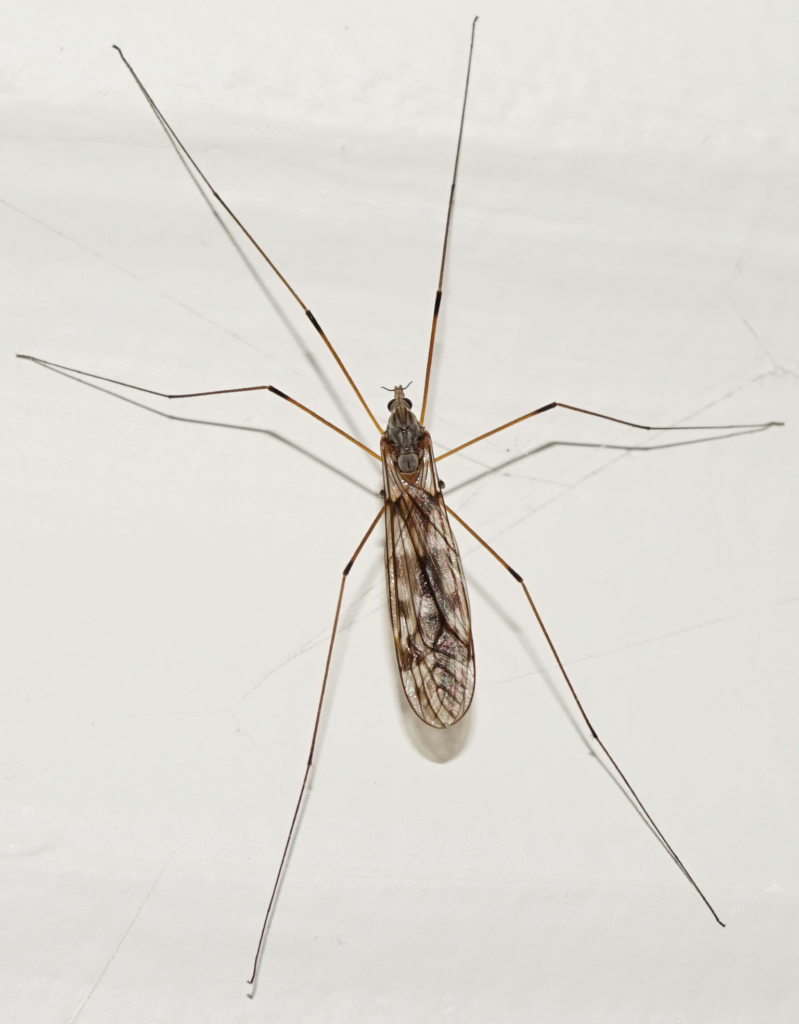
Safe and Eco-Friendly Crane Fly Prevention Methods
Start with simple changes to keep your outdoor space safe from crane flies. Make your yard a place where they can’t live. Here’s how to keep your yard free of pests without using harsh chemicals.
- Install barriers: Use window screens and mesh covers over vents to block entry points. Sealing gaps in doors and windows stops adults from coming indoors.
- Use natural repellents: Spraying diluted neem oil or vinegar solutions on plants and soil disrupts breeding sites. These options are safe for gardens and pets.
- Adjust landscaping: Trim overgrown grass and remove debris where larvae hide. Regular mowing and aerating soil reduces moist areas crane flies need to lay eggs.
Keep soil dry by adjusting sprinklers—overwatering attracts larvae. Mulch sparingly to avoid damp conditions. Compost piles should stay turned frequently to deter egg-laying. These steps work together to prevent infestations naturally.
Combining these methods strengthens long-term crane fly prevention. By addressing habitat needs first, you reduce reliance on pesticides while safeguarding your garden’s health.
How to Get Rid of the Big Mosquitoes and Crane Flies
To fight big mosquitoes and crane flies, use a two-part plan. This plan includes everyday items and keeping things clean. Natural repellents and simple tricks can keep these pests away without using harsh chemicals. Start by using common household items to make traps and barriers.
For crane flies, mix apple cider vinegar with dish soap in shallow dishes. This will attract and kill them. To keep mosquitoes away, place citronella candles outside. These candles make it hard for mosquitoes to fly.
Both pests don’t like certain smells. So, use essential oils like peppermint or lemon eucalyptus. Mix 10 drops of oil with water in a spray bottle. Spray this on plants and patios to keep them away.
- Place vinegar traps in shaded areas where pests linger.
- Hang aluminum foil around gardens; its reflective surface confuses flying insects.
- Trim overgrown grass weekly to eliminate larval habitats.
Keeping up with maintenance is key. Remove standing water every week, like from birdbaths and gutters. This stops them from breeding. Also, check mulch and soil moisture often. Crane fly larvae love damp places.
By following these steps and using natural repellents, you can keep your outdoor spaces pest-free all year.
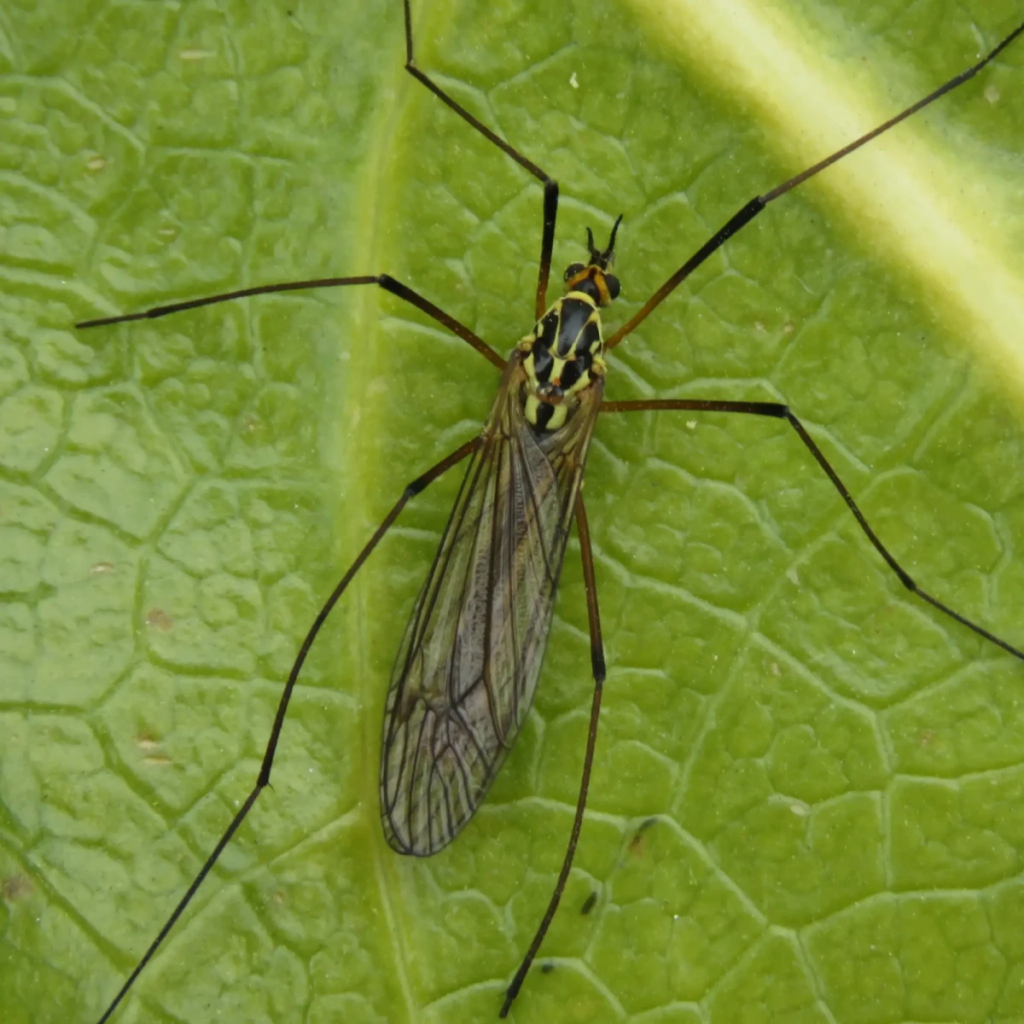
Crane Flies in the US: Regional Insights and Tips
Crane flies in the US live in many different places. Each area has its own weather, soil, and seasons. These things change how crane flies act and how we control them.
- Northeast: Cool, humid weather helps crane fly larvae in wet soil. Start early spring to stop them by aerating lawns and not watering too much.
- Midwest: Spring rains make crane fly problems worse. Watch the soil moisture and use nematodes when it gets warmer after winter.
- South: Crane flies stay active longer because of warmer winters. Dry out wet spots and cut grass short in fall.
- West Coast: Dry areas get more crane flies after it rains. Change how you water to avoid standing water and use garlic sprays.
Everyone should:
- Ask local agricultural experts for advice on their climate.
- Change when you treat the soil based on frost dates and rain.
- Use mulch or compost to keep soil moisture right without too much water.
Knowing how crane flies act in each area helps us fight them better. This way, we can reduce their problems all over the country.
Crane Fly Larvae: Understanding Their Role and Impact
Crane fly larvae, also called leatherjackets, are a key part of their life cycle. They eat grass roots, damaging lawns. Knowing when to control them is important.
Soil moisture and quality affect their growth. Wet, organic-rich soils help them grow fast. Dry conditions slow them down. Changing soil conditions can stop their growth and lower infestations.
Here are some ways to control larvae:
- Keep soil well-drained to avoid too much moisture.
- Use beneficial nematodes when they grow the most.
- Mow regularly to reduce places for them to hide.
Acting early in their life cycle helps prevent damage. This approach keeps lawns healthy without using harsh chemicals.
Crane Fly vs Mosquito: Key Differences and Similarities
Crane flies and mosquitoes may look alike at first, but they are different. They have different behaviors, biology, and roles in nature. Here’s how to tell them apart:
- Size and shape: Crane flies have long bodies and legs, looking like big mosquitoes. But their legs often swing loose when they fly.
- Biting habits: Mosquitoes bite to get blood and spread diseases. Crane flies can’t bite and don’t harm people.
- Larval habitats: Mosquito larvae live in standing water. Crane fly larvae, or leatherjackets, live in soil or grass and can damage lawns.
- Lifespan: Adult mosquitoes live for weeks to months. Crane flies live only 10–15 days as adults, focusing on mating.
Both insects live in damp places but have different effects. People often confuse them because they look similar. But knowing the differences helps pick the right ways to control them.
For mosquitoes, getting rid of standing water is key. For crane flies, managing soil is important. Knowing these differences helps manage pests well without overdoing it.
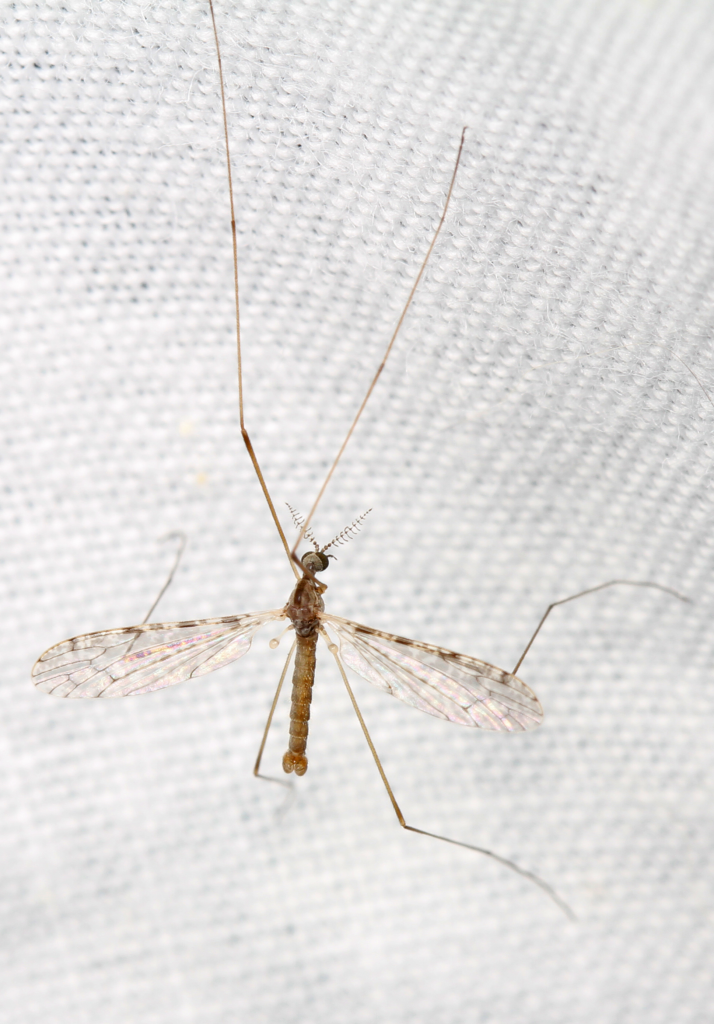
Effective Strategies for Long-Term Crane Fly Control
To keep crane flies away for good, you need to take proactive steps and care for your yard all year. Using Seasonal Prevention Techniques is key. Adding integrated pest management (IPM) helps keep your yard safe without harming the environment.
- Seasonal Prevention Techniques: Change your approach with the seasons. In spring, aerate your soil to stop larvae. In fall, use beneficial nematodes to fight larvae before winter.
- Integrated Pest Management (IPM): Mix natural solutions like neem oil with changing your yard. Always check your lawn for signs of damage, like spongy soil, to catch problems early.
- Monitoring and Follow-Up: Look for crane fly signs every month. Use sticky traps to track adults and adjust treatments as needed.
Testing your soil regularly keeps your grass healthy. This makes your yard less appealing to crane flies. By timing your actions with their life cycle and using green methods, you can stop them from coming back. Keeping an eye on your yard helps small issues stay small. These steps protect your yard and keep the local ecosystem healthy.
Conclusion
Understanding crane fly behavior and their life cycle is key to keeping your lawn healthy year-round. Natural remedies like adjusting watering habits and applying beneficial nematodes provide effective, chemical-free ways to control them. Early intervention, especially during the larval stage, helps protect your yard from root damage.
For ongoing success, consider combining these green methods with proactive lawn care. Learn how to keep your soil healthy and avoid overwatering, which encourages larvae. If you’re dealing with other yard pests like mosquitoes, check out our guide on how to get rid of mosquitoes naturally.
Don’t forget—proper lawn drainage and regular yard maintenance are your best long-term strategies. If home methods aren’t enough, we’re here to help. Contact Vinx Pest Control for a professional evaluation and eco-friendly pest solutions. Taking action now means saving money and preserving the beauty of your outdoor space for years to come.
FAQ
What are crane flies and how can I identify them?
Crane flies are big, mosquito-like bugs found in damp places. They have long legs and a thin body. They don’t bite. To spot them, look for their unique shape and where they live, like moist soil and grass.
What is the life cycle of crane flies?
Crane flies go through four stages: egg, larva, pupa, and adult. Female crane flies lay eggs in damp soil. The larvae, or leatherjackets, grow there.
Soil moisture and temperature affect their growth. This is important for controlling pests.
How can I get rid of crane flies naturally?
To get rid of crane flies, try herbal repellents and natural traps. DIY barriers also work. Simple things like essential oil sprays and vinegar traps can help.
What are the signs of a crane fly infestation?
Look for damaged grass, adult crane flies, and lots of larvae in the soil. Spotting these signs early helps you choose between DIY fixes or calling pest control.
How can I prevent crane flies from invading my property?
Use eco-friendly methods like window screens and proper drainage. Regularly apply natural repellents. A tidy yard with less moisture also helps.
What is the difference between crane flies and mosquitoes?
Crane flies are harmless and don’t bite. They have longer legs and a longer body than mosquitoes. Knowing this helps in managing both pests.
What do crane fly larvae do?
Crane fly larvae, or leatherjackets, eat grass roots and soil matter. This can harm lawns. It’s important to control their numbers to keep grass healthy.
Are there any effective long-term strategies for crane fly control?
For long-term control, use integrated pest management and monitor outdoor areas. Seasonal interventions also help. Keeping the ecosystem balanced is key.



